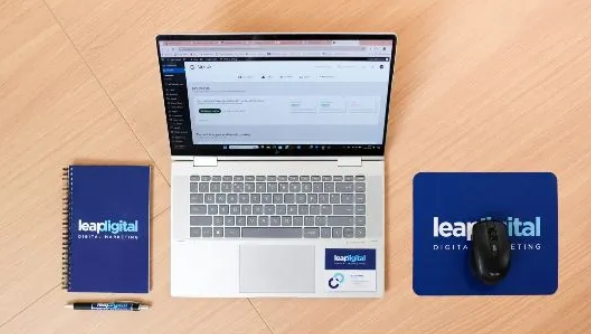Google is not just tweaking search anymore; it is reengineering it.
With the launch of AI Overviews (formerly known as SGE: Search Generative Experience), we enter a new era of search that prioritizes answers over keywords.
Enter: the Google AI Overview API — an emerging toolset that’s unlocking access to these generative responses and offering developers, product teams, and SEOs the power to tap into Google’s new AI-rich SERP layer.
In this blog, we’ll explore what this API actually offers, why it matters, and how forward-thinking teams can use it to build smarter products, optimize content for visibility, and adapt to Google’s AI-powered future.
What Is the Google AI Overview API?
The Google AI Overview API provides access to the AI-generated summary boxes (formerly called “snapshots”) that now appear above or within SERPs in eligible queries.
These summaries are generated using Google’s Gemini-powered systems, blending:
- Top-ranking content,
- Real-time web data,
- Contextual understanding of the searcher’s intent.
Instead of ten blue links, the user gets a coherent, paragraph-style summary — often with sources cited below, and sometimes with interactive follow-up prompts.
The API is expected (and in some cases already available via third-party workarounds) to return:
- The AI-generated answer
- Cited URLs/sources
- Follow-up question suggestions
- Topic clusters or related context
- Indicators of query type (navigational, commercial, informational)
Right now, there’s no public Google-official AI Overview API in open beta — but several SERP APIs like SERPHouse and scrapers simulate this capability by programmatically capturing AI overview results in real time.
Must read: How Much Does it Cost to Build a Storytelling App Like Wattpad for Readers and Writers?
Why It’s a Big Deal: The Future of SERPs Is AI-First
The traditional SERP model — 10 organic links, maybe a featured snippet, some ads — is dissolving.
AI Overviews are already taking prime screen real estate and changing user click behavior.
Here’s what that means:
1. Click Distribution Is Shifting
The AI Overview often answers the query before the user scrolls. That means fewer clicks on blue links — unless you’re featured as a citation.
2. Citation Is the New Rank
Getting your page cited in the AI Overview is becoming more powerful than ranking #1. But we still don’t have a clear “ranking factor” list. What we do know: relevance, expertise, and clean structure matter.
3. Query Intent Becomes Central
Because generative answers are intent-aware, understanding why a person searches, not just what they search, becomes essential.
4. Structured Data May Influence Visibility
Pages with structured data, clear answer formatting, and topical authority seem to show up more frequently in cited sources.
5. New Search Behavior = New Product Opportunities
With AI answers and follow-up questions embedded directly in search, users now interact with SERPs like chat interfaces. That unlocks new UX and app models.
Who’s Using the Google AI Overview API (or Simulated Access)
Let’s be clear — Google hasn’t rolled this out to the public yet. But platforms and developers are already:
- Scraping AI Overview boxes via headless browsers or proxy-backed APIs
- Reverse-engineering answer triggers to predict which queries generate overviews
- Training models on AI Overview summaries to understand content positioning
Examples:
- SEO tools analyzing when/where AI Overviews appear and which pages are cited
- News aggregators detecting if their articles are summarized and credited
- E-commerce monitors watching AI answer content around product categories
- Content marketers using API insights to reformat their content for inclusion
Must read: Top 10 Best Mobile App Development Companies In the USA
How You Can Start Preparing Now
Even if the official API is behind closed doors, you can start acting like it’s here. Here’s how:
✅ Optimize for Inclusion, Not Just Ranking
Google’s AI chooses sources based on content clarity and trust. Use simple, factual writing. Answer questions directly. Include references, data, and subheadings that reflect search intent.
✅ Use Tools That Emulate AI Overview API
Some SERP APIs (like SERPHouse) allow you to simulate or extract AI Overview content with each query. Integrate that into your rank tracking and SERP analysis dashboards.
✅ Monitor When AI Overviews Appear
Track keywords where Google is replacing snippets with AI responses. This tells you which queries are becoming “AI-first” — and where to focus citation efforts.
✅ Restructure Your Content for Semantic Clarity
Use FAQ sections, bullet points, schema markup, and rich metadata. The cleaner your content, the easier it is for AI to extract and feature it.
✅ Create AI-Ready Content Formats
Consider writing “explainer” or “how-to” formats that answer core queries in the first 100 words. These summaries are more likely to be extracted and cited.
The Implications for SEO, Product, and Content Strategy
Let’s make this plain:
The Google AI Overview API isn’t just a technical endpoint. It’s a strategic inflection point for the entire search industry.
If your SEO strategy is still focused only on link-building or tracking rank positions, you’re going to be blind to what’s now center stage in the SERP.
If your product offers search insights but doesn’t account for AI answers, you’re missing half the picture.
And if your content isn’t citation-worthy, you’ll disappear — even if you rank.
Must read: Top 10 Best Companies to Outsource Frontend Development In the USA
Final Thoughts
Google’s AI Overview API — whether officially released or indirectly accessed — is going to reshape how we:
- Understand user intent
- Evaluate SEO performance
- Build products that interact with search
- Create content that deserves visibility
It’s no longer about ranking at the top. It’s about being understood by AI and trusted enough to be cited.
Smart teams are already adapting. The question is: will you?









